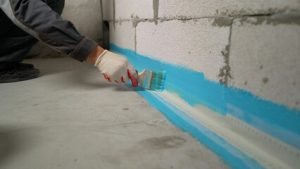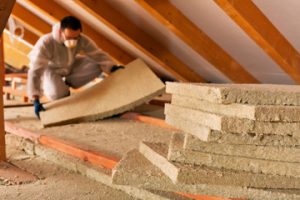
Your piano holds more than monetary value, and it needs special handling to ensure a safe move. Mishandling can damage internal components and leave scuff marks and scratches on surfaces.
Narrow doorways, stairs, and uneven outdoor terrain pose additional challenges. Piano Movers Houston use techniques and tools to navigate these obstacles without damage.
1. Size and Weight
Unlike most furniture, pianos are not something that can simply be lifted and carried. They are top-heavy, awkwardly shaped, and packed with delicate components, including strings, hammers, and a fragile soundboard that can be damaged with the slightest mistake during transport. One wrong move can result in costly damage to the instrument and injury to the people attempting to lift it.
Even if you have the best of intentions, moving a piano yourself can be dangerous. It requires special lifting techniques, heavy-duty equipment, and a team of strong, experienced movers. Attempting to handle a piano without the proper equipment and training could lead to injuries to yourself, your family members, or other moving crew members.
Piano movers start the relocation process with a careful assessment of your home’s layout, measuring doorways and hallways for clearance dimensions before they ever pick up the instrument. This helps them plan the safest route for the move, reducing the risk of scratched or chipped walls, doors, or staircases.
They also use specialized dollies, floor covers, and stabilizing straps to ensure that the piano is lifted properly and transported safely. These supplies help them avoid scratches, dents, and other types of damage that are all too common during the relocation process.
In addition to protecting the piano, these materials also protect the movers’ safety. Thick furniture blankets provide a barrier between the piano and any hard surfaces, preventing scratches or other damage. Plastic coverings keep moisture and grit out of the keyboard’s finish and internal mechanisms, further minimizing risks.
Once the piano is in its new home, professionals carefully position it to accommodate for acoustics and appearance. They also advise the homeowner on how to care for the instrument post-move, helping it remain in peak condition. In addition, they recommend avoiding any changes in temperature or humidity that may affect the soundboard and interior components. This simple step can prevent the need for tuning or repair down the road. If you’re thinking about hiring a professional to relocate your piano, remember that every minute you save the movers is money back in their pockets! Clear pathways before they arrive, remove doors from hinges, roll up rugs, and otherwise prepare the area.
2. Internal Components
The weight and size of a piano make it impossible to simply lift and carry like standard furniture. Even a single misstep can cause serious damage to the instrument or injury to people involved in the move. A cracked soundboard, broken keys, or misaligned pedals aren’t just a nuisance; they can also significantly impact the piano’s performance.
Professional piano movers understand how to safely maneuver and transport the instrument without causing any damage. They use specialized dollies, floor covers, and stabilizing straps to keep the piano secure while moving. They are also familiar with the unique center of gravity and nuances of each make and model. If they’re transporting a grand piano, they may have to partially disassemble it for safety and stability.
Narrow doorways and tight spaces present additional challenges for movers. They know how to pad corners and navigate tight turns to avoid scratching or damaging the piano or home. For high-rise moves, a crane or hoist is often necessary. And of course, elevator reservations, special padding, and building management coordination are a must.
While some amateur movers attempt to save money by hiring general movers, this is rarely a good idea. Pianos are not just heavy or bulky; they’re delicate, sensitive instruments that require expert handling and specialized equipment. General movers don’t have the training, tools, or experience to safely and properly handle these instruments.
Pianos are precision instruments that can be damaged easily, and even a small misstep can have catastrophic consequences. It’s not worth the risk to try to move a piano on your own or to trust the task to untrained help. Whether your piano is an investment, family heirloom, or a beloved part of your musical career, professional movers are the only way to guarantee that your piano will arrive at its new location in pristine condition. Their training, equipment, and specialized insurance provide peace of mind throughout the entire moving process. Contact Aardvark Movers Inc today to learn more about our hourly piano moving rates. We offer a wide range of services, from local moves to long-distance relocations.
3. Tight Spaces and Stairs
Pianos require special care because they are large and heavy. The instruments can pose many challenges during relocations, including narrow doors, tight hallways, and steep stairs. It is important to hire professional movers in NH who understand these challenges and are trained to move them safely. Attempting to relocate a piano yourself can cause damage to the instrument and injuries to the people trying to move it.
Narrow doorways and hallways can limit movement during a piano move, while stairs can be dangerous if not handled with caution. Tight corners increase the risk of damage and may require additional people to assist with moving the piano. Professional movers use dollies, straps, and padding to help with transport, minimizing the risk of injury to themselves as well as the piano. They can also adjust the angle of a grand piano to avoid stairs if necessary.
Even when a piano is in a truck, the journey can be difficult. Weather factors, like high temperatures and humidity, can impact the condition of the wood and internal mechanisms. If possible, it is best to schedule a move during a mild season to reduce the likelihood of these issues. If this is not feasible, consider requesting a climate-controlled truck to protect the piano during transit.
Once the piano is in the new home, it must be leveled and re-tuned. This can take a few days and requires special equipment to avoid damaging the instrument. It is essential to protect the piano from direct sunlight and other heat sources as these can damage the wood. It is also essential to keep the piano away from moisture and other environmental hazards.
Although a piano can be an excellent addition to any home, it is essential to understand its size and weight when considering relocating it. It is recommended that you hire professionals to relocate a piano because the process requires skill and precision. It is also important to remember that the instrument can be very expensive, especially if there are any damage or other complications during the transportation process.
4. Environment
If you’re moving an instrument of such high monetary or sentimental value, it’s best to hire professional piano movers. They will take care to keep the piano in great condition, no matter how long it’s in transit. The specialized equipment and careful planning involved in the process also help prevent damage.
The size and weight of a piano are the most prominent obstacles to overcome when transporting it. The top-heavy instrument can easily fall over and become damaged if it’s handled the wrong way. This is why it’s so important to find a reliable company for interstate piano moves New Hampshire residents can trust.
Professional piano movers have specialized tools and equipment for safely moving this delicate, bulky item. Their knowledge of the different types of pianos and their unique specifications can help them avoid common problems during a move, such as damaging keys or internal components. Pianos are also sensitive to weather conditions, which can impact their tuning and sound quality.
When choosing a piano moving company, be sure to check their credentials and references. Look for a company that has extensive experience in the field and can provide proof of liability coverage in case anything goes wrong. In addition, if possible, try to schedule your move during off-peak times when companies are less busy. This can help you save money without sacrificing the quality of your piano move.
Before the actual move, make sure to carefully measure doorways and hallways where the piano will be moved through. This will prevent any unexpected obstacles that could lead to costly repairs or injuries. The movers should also carefully wrap the piano with blankets or thick padding to protect it from scratches and dents. They should also secure the keyboard lid so it doesn’t swing open during transit, potentially damaging the keys.
When choosing a piano mover, consider whether they have a climate-controlled truck. Pianos are particularly susceptible to extreme temperatures, and the cold can affect their internal parts. Also, moisture can damage the finish and soundboard. Professionals use climate-controlled trucks to guarantee the safety of their clients’ instruments.








